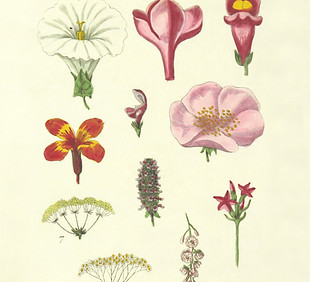


Musings of an ecologist
Aaroha Malagi
BELOWGROUND MECHANISMS OF INVASION SUCCESS
As a part of my PhD dissertation, I am exploring the belowground mechanisms of the invasion of grasses in forested ecosystems. Specifically, I am looking at how mycorrhizal associations and rhizosphere dynamics of native species are changing due to the presence of invasive grasses. To understand how invasive grasses are affecting the belowground dynamics of native species, I am transplanting native seedlings at fixed intervals along a transect of invasive intensity. In each of these intervals, I am transplanting 5 individuals of each of the 2 target native species.


LONG-TERM ECOLOGICAL OBSERVATORY - GRASSLAND
Introduction
The primary objective of LTEO is to monitor the diversity and function of grassland ecosystems in different bio-geographic regions of the Indian sub-continent, with the aim of understanding the major drivers of grassland dynamics in Indian open habitats. We did this by establishing permanent monitoring sites in grassland habitats and quantifying the following parameters:
1) Species richness and cover
2) Leaf traits
3) Above-ground biomass
4) Below-ground biomass, and
5) Soil nutrients
Methods
We employed a nested design with three blocks of 10*10m in each site, within which we have 5 replicate plots where cover, above-ground and below-ground biomass are sampled. A pictorial representation of the sampling design is given in Figure 1.
We have currently set-up 22 sites in different bio-geographic zones of the country. A map of the sites (white points) overlaid on an Aridity Index (AI) is shown below.


EFFECT OF GRAZING INTENSITY ON THE COMMUNITY STRUCTURE OF TROPICAL MESIC GRASSLANDS
Introduction
As part of my Master's dissertation, I conducted a study that looked at the effects of grazing intensity on the community structure and functional traits of herbaceous communities in a tropical mesic grassland. We asked the following questions:
1) Does grazing intensity affect the species richness, diversity, and composition of herbaceous communities in a mesic grassland?
a. Do wild and domestic ungulates have differing effects on community structure?
b. Does herbivore diversity have an effect on community structure?
c. Do functional groups (graminoids and forbs) respond differently to change in grazing intensity?
2) Does grazing intensity influence canopy structure (erect or prostate) and life history (annual and perennial) of the herbaceous community?
Methods
We conducted vegetation sampling in different grassland patches of the protected area. We used a nested design, wherein a 50*50 sq.m plot was established in each grassland patch, within which 12 1 sq.m sub-plots were randomly placed. The identity and abundance of every herbaceous species was recorded. A representative sampling design is pictured below:
A map of the study area is given below, where the black points represent the sampled grassslands and the colours reperesent different elevation bins.





Photos from the field









